Lifestyle merchandising is the new “it” strategy for modern brands and retailers.
With consumers becoming more selective about their purchasing decisions, a merchandising strategy that reflects their desire for carefully curated products is far more impactful than, say, arranging all of your products by color.
Picture this: You walk into a store. A cute top that catches your eye is hanging above a pair of dark wash jeans that go with it perfectly. On the floor, at the bottom of the display, there are two pairs of shoes—one sandal and one boot—both of which could work with the outfit. On the shelf above the top, there is a matching earring display, several pairs of sunglasses, and a glass bowl holding matching silk scrunchies.
When you look at the display as a whole, you see a complete outfit. Every item is deliberately included to complement the next. From your perspective as a shopper, it’s almost difficult to only buy the top. That’s the magic of lifestyle merchandising. It allows you to generate authentic moments of want through product groupings that are curated by look, quality, and style or theme.
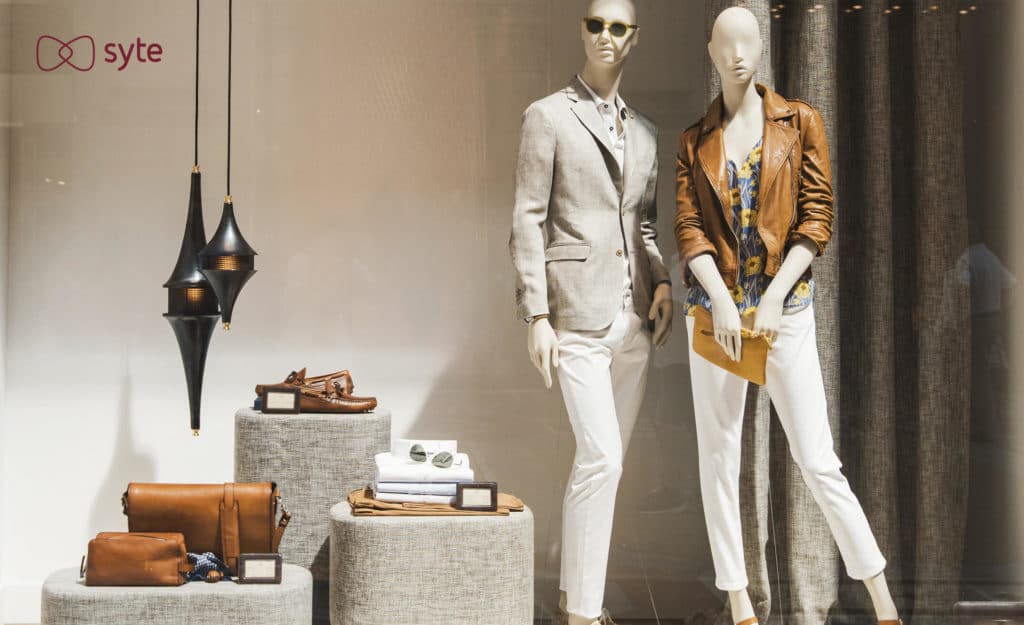
In brick-and-mortar stores, lifestyle merchandising takes the form of physical product displays and reimagined floor arrangements. Online, there are far more opportunities to reap the benefits of this strategy.
In this post, we will review the top advantages of lifestyle merchandising along with four ways to implement the most effective strategy for your eCommerce site.
The Benefits of Lifestyle Merchandising Go Way Beyond Sales
Lifestyle merchandising helps brands and retailers achieve many of the business goals traditionally associated with in-store merchandising, such as unloading specific SKUs, promoting items with the highest profit margins, or moving inventory you’d otherwise need to put on sale.
When done right, one of the top benefits of lifestyle merchandising is that it can increase your shoppers’ average basket size and AOV by displaying items that “make sense” together. But it can also help you achieve broader brand goals as well. For example, this strategy allows you to “own a vibe” and associate your brand with a major part of your shoppers’ lives, or how they would like to live.
Take the shopper who’s determined to adopt a healthier lifestyle. When she enters your online athletic apparel store, she is greeted with your “Healthy Reset” collection. The page is full of everything she believes she’ll need to get into shape and feel better: yoga pants, sports bras, workout tops, stretch bands, a foam roller, water bottles, vitamins, and apple cider vinegar gummies. It also includes items like facial serums, eye masks, lip balm, and aromatherapy oils. The shopper, inspired and confident that these items will help her start off on the right track, packs her cart.
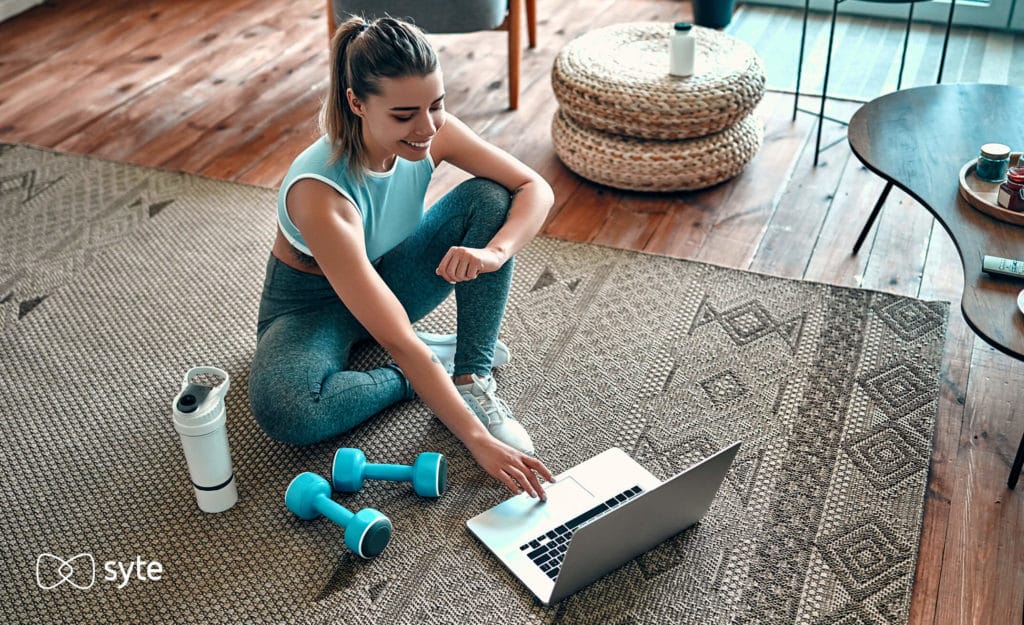
In this scenario, the website’s lifestyle merchandising strategy can have a much further reach than just making a big sale. It allows you to develop your brand as a leader in wellness. This isn’t only because of the product categories you sell, but because the items in the collection cover the full spectrum of wellness.
4 Ways to Get Lifestyle Merchandising Right Online
Here are some strategies you can implement to make your online lifestyle merchandising strategy as eye-catching and impactful as possible.
1. Recommendations for complementary items
Traditional recommendation engines generally showcase products that are similar to the original search query or item being viewed. For example, if you click on an image of a gray sofa, you’ll get recommendations for visually similar sofas.
To effectively incorporate recommendations into your lifestyle merchandising strategy, you can use recommendation “real estate” to showcase items that go with the product a shopper has clicked on or added to their cart, instead of displaying items that they might buy instead of it.
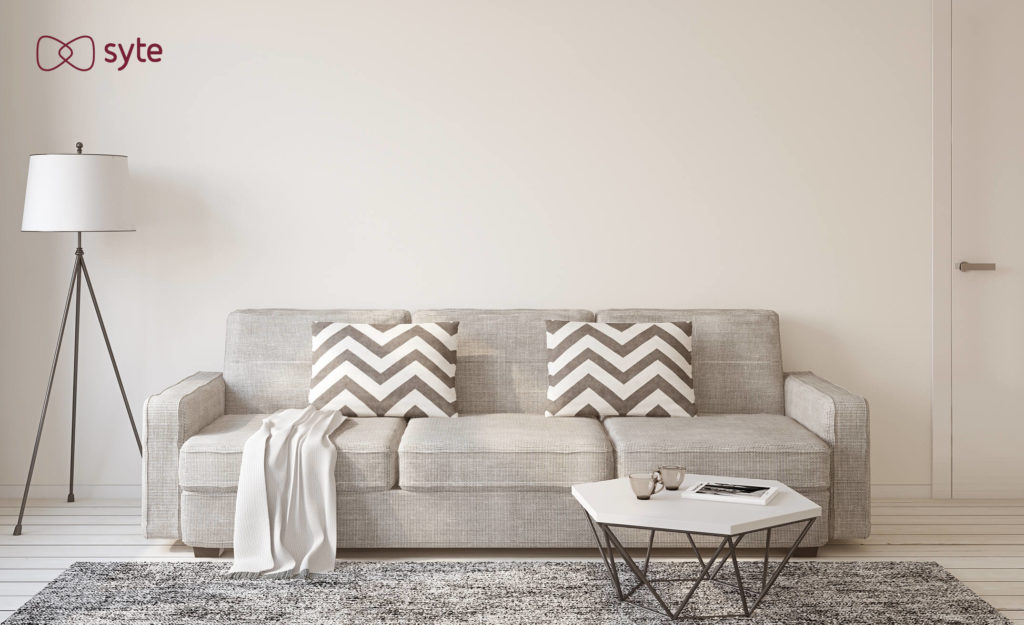
For example, the shopper that clicked on the gray sofa could see recommendations for a blanket, throw pillows, a floor lamp, rug, and a coffee table – each of which match the couch. If the shopper were to buy every recommended product, they’d end up with a completely furnished living room.
You could also add a photo gallery of user-generated content (UGC) to provide alternative looks to shop (beyond those in your recommendation carousel). Another benefit of incorporating UGC is that it adds an important layer of social proof that can help shoppers feel more confident about their purchasing decisions.
2. Themed collections
Collections are an easy way to create a coveted vibe. They allow you to curate product groupings based on the business metrics or brand goals that matter most to you.
Collections often focus on a season, trend, or activity, and feature a range of products and prices. For example, PrettyLittleThing’s “Autumn” collection page includes rows of complementary items in aesthetic color schemes. In the example below, a matching trench coat, crop top, blazer, and trousers are displayed side-by-side. An inspired shopper could easily buy all of the items to build a complete, interchangeable fall wardrobe.
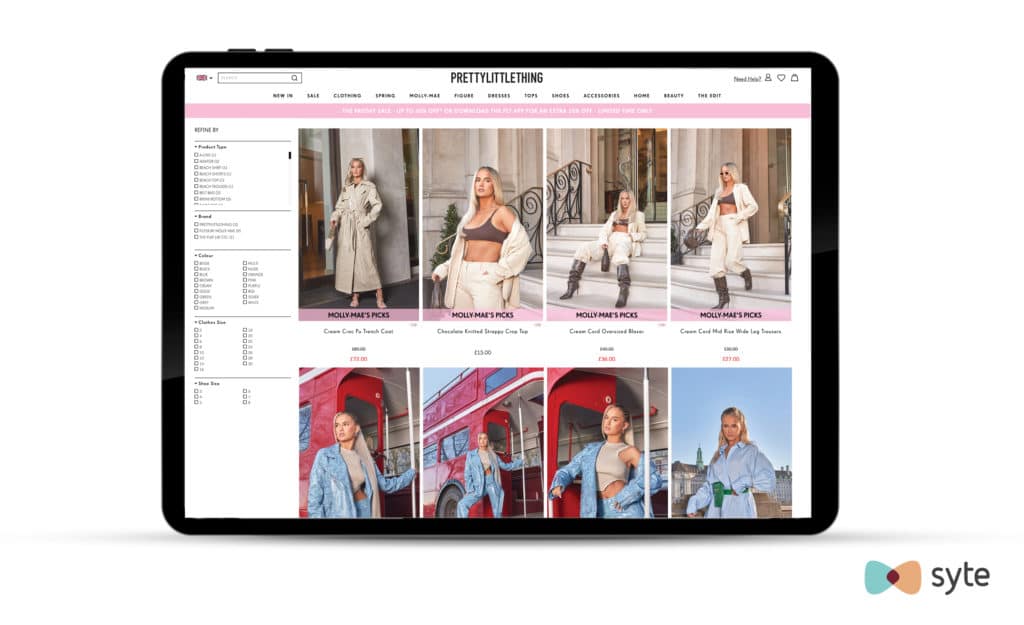
3. Gift guides
Gift guides are similar to themed collections. They usually focus on a specific holiday, such as Christmas, Valentine’s Day, or Father’s Day, and feature different types of products that correspond to that theme. Positioning a collection as a gift guide helps you capture the attention of shoppers who are on a mission to buy something for someone else.
Gift guides, however, don’t need to be confined to holiday themes. There’s ample room for creativity here. A more evergreen route is creating gifts that revolve around different styles or price ranges. Ardene, for example, has a gift shop page that highlights gifts under $10, $20, or $30. On the other end of the price spectrum, Gucci offers gift guides for her, for him, and for children.
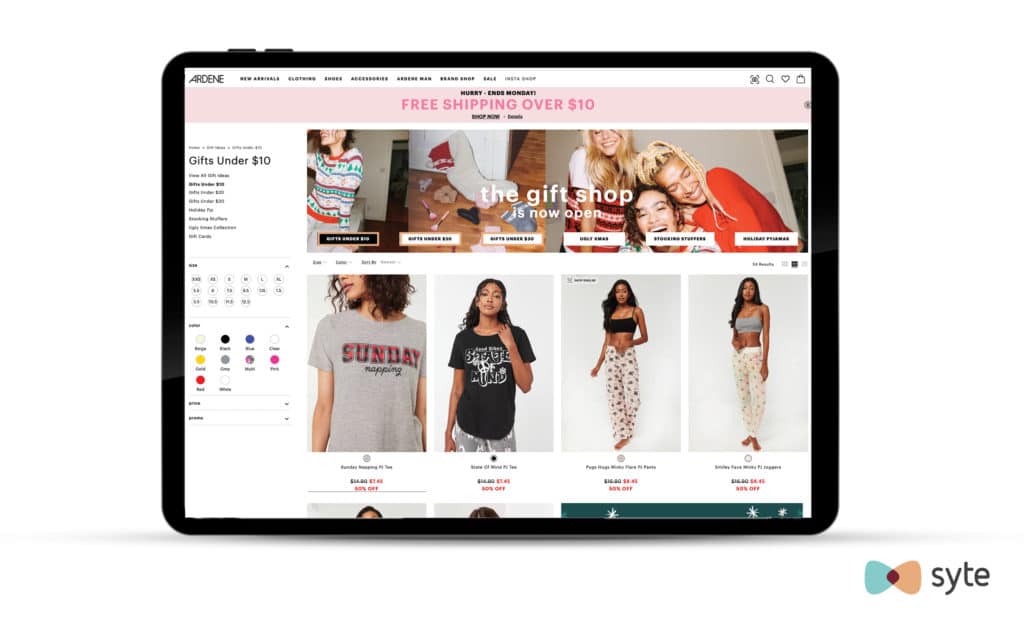
4. Bundles and deals
Viewing a carefully selected, complementary catalogue of products could be inspiring enough for many shoppers to flesh out their wardrobe, home decor, skincare, or jewelry collection with a full basket of purchases. But with the added incentive of savings, it’s even harder to resist buying an entire package or look.
In the example below, Glossier showcases products that are grouped based on function. In the top right corner, you can see how much money you save by buying the set instead of the individual products. For a price-savvy shopper, you could reason you might as well buy a set and get a third product for a discounted price than buy two full-priced products.
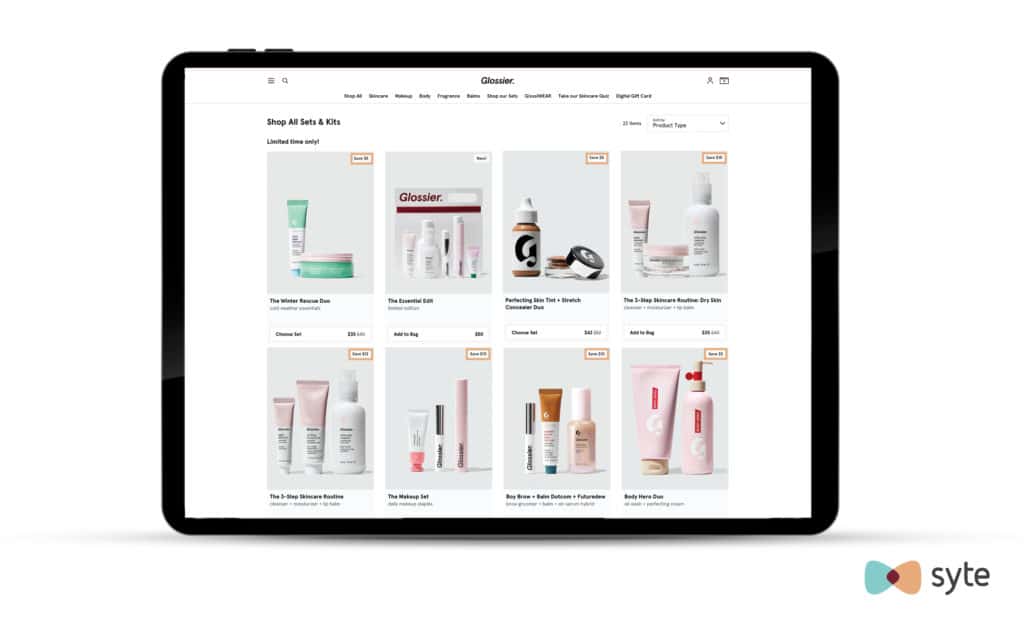
Shift Your Online Merchandising Into Higher Gear
Lifestyle merchandising empowers you to achieve all of the traditional benefits of a solid merchandising strategy and more. Today’s consumers are becoming more discerning and selective, paying greater attention to quality and aesthetics than ever before. With curated sets that represent an entire lifestyle, vibe, or look, you won’t just boost sales, you’ll become the “ideal” source to find it.